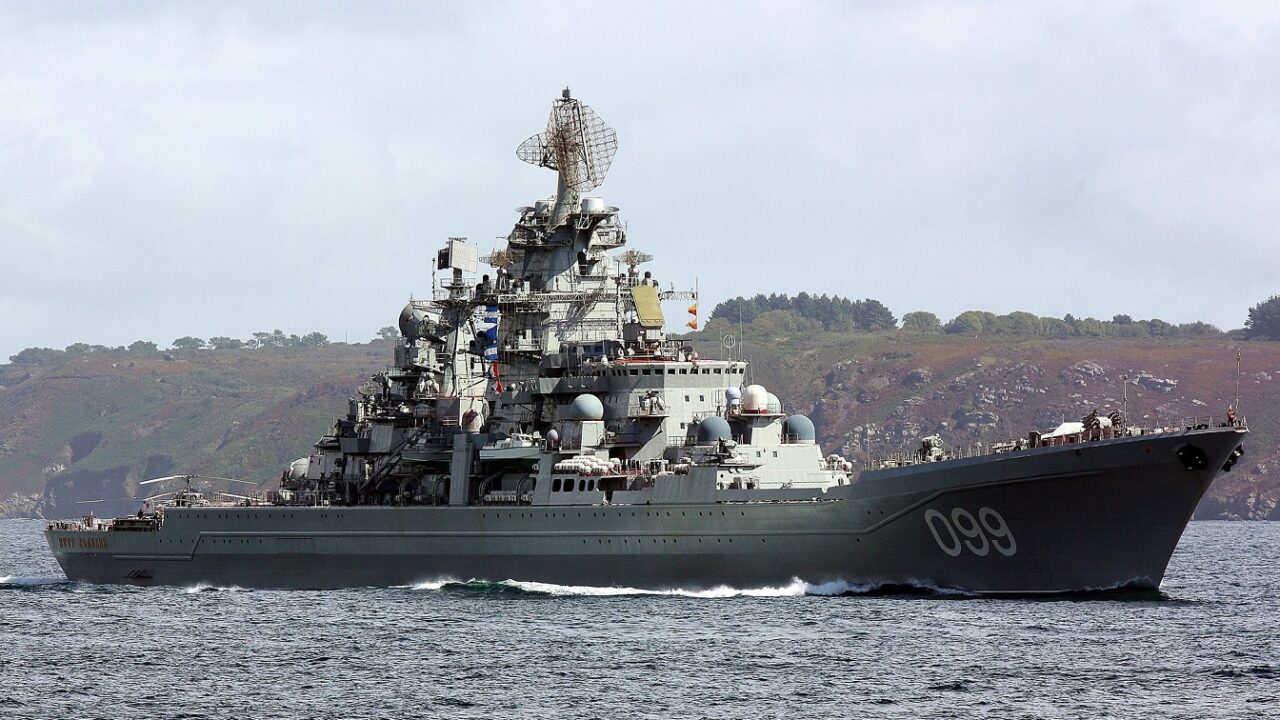Sure, the Russian Navy Isn’t the Soviet Navy (But It Still Can Kill): China might pose the most significant national security threat to the U.S. and the West, but Russia shouldn’t be underestimated. For years now, Moscow has been pursuing a modernization program of its decaying military forces. The Russian Navy has been an important cog in the transformation of the Russian armed forces.
Similar to the rest of the Russian military, the Russian Navy suffered considerable neglect following the disintegration of the Soviet Union and the stagnation that hit the Russian economy afterward. Although the modernization efforts that began in force in the late 2000s have improved the Russian Navy’s situation, it is still approximately 75 percent smaller than the Soviet Navy, which was approximately 650-ship strong at its height.
The Russian Navy is composed of four fleets (Northern Fleet, Pacific Fleet, Black Sea Fleet, and Baltic Fleet) and one flotilla (Caspian Sea Flotilla).
As the maritime component of the Russian armed forces, the Russian Navy has two primary mission sets: strategic deterrence through its nuclear capabilities and homeland defense. However, it does have the ability to conduct global deployments, albeit at a much smaller scale than the U.S. Navy.
According to the Defense Intelligence Agency (DIA), the Russian Navy has been steadily increasing its maintenance, training, preparedness, and deployments, an outcome of the modernization efforts. In addition to these initiatives, Moscow is constructing new surface vessels and submarines.
Today, the Russian Navy has about 130,000 personnel and approximately 32 major surface vessels, including one aircraft carrier, two battlecruisers, one cruiser, 12 destroyers, and 11 frigates. In addition, however, the Russian Navy can field a larger number of smaller vessels, such as corvettes, minesweeper, and patrol boats. Most importantly, the Russian naval arsenal contains 70 submarines of various ages and capabilities.
The average age of the Russian Navy’s vessels is between 20 to 25 years, meaning that a modernization program is mandatory if the warships are to remain combat effective and competitive. However, with proper upgrades and maintenance, warships could remain in service even for up to 40 years.
But in this day and age of advanced missile technology, the vessel that delivers the weapon isn’t necessarily as important as the weapon itself. For example, the Russian Navy could—and has—put the 3M14 Kalibr cruise missile on commercial or even shipbreaking vessels to dramatically increase its ability to deliver precision strikes and thus its deterrence. Thus, the U.S. and NATO might be able to field larger and more advanced warships. Still, the Russians could negate those advantages by deploying larger forces of small vessels that are armed with hypersonic and subsonic missiles.
The 3M14 Kalibr is a land-attack cruise missile that can pack a payload of almost 1,000 lbs and shoot it at more than 1,500 miles; the warhead can be conventional and nuclear. The missile has seen action in the Syrian Civil War when Russian warships fired a salvo of 26 missiles at anti-government forces.
Despite its shortcomings and challenges, the Russian Navy is still a considerable force and can prove a serious threat to the U.S. in the event of a conflict.
1945’s New Defense and National Security Columnist, Stavros Atlamazoglou is a defense journalist specializing in special operations, a Hellenic Army veteran (national service with the 575th Marine Battalion and Army HQ), and a Johns Hopkins University graduate.

